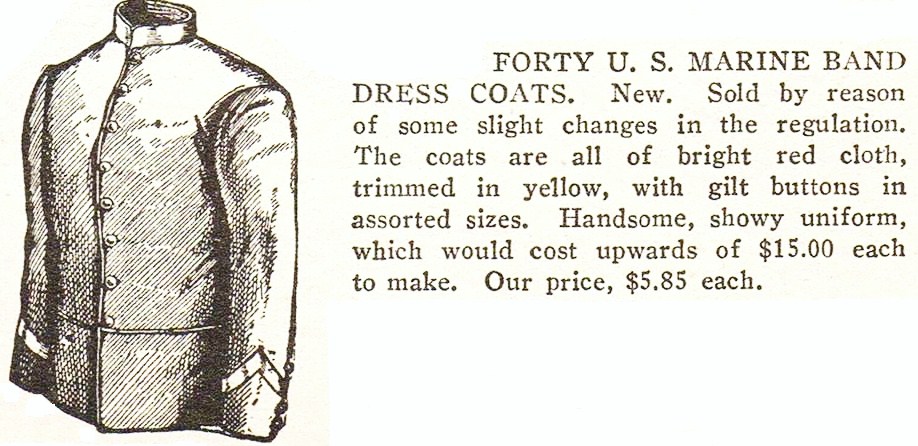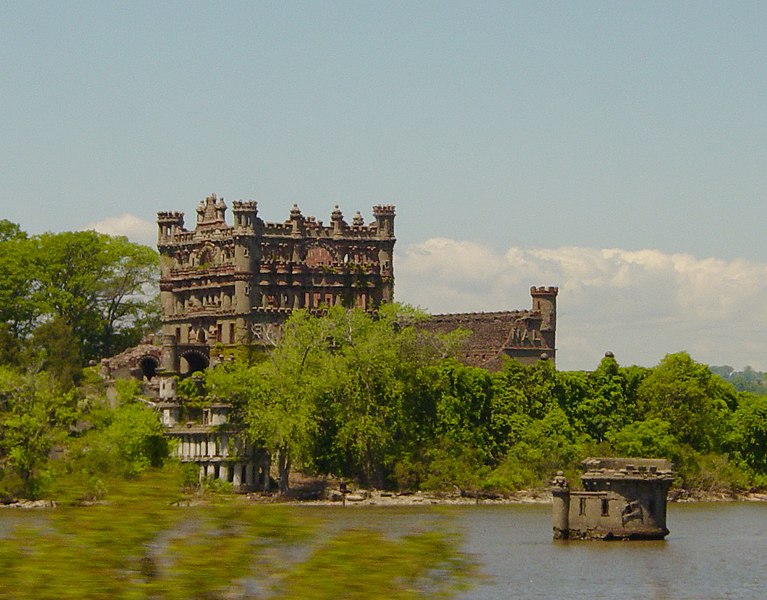On July 28th, members of the Ullage Group took a field trip to Bannerman Castle, organized by Dr. Mamie Caton.

For train passengers, a partial and too-brief view of Bannerman Castle can be had just south of Beacon, NY. The castle is situated on a small island once called Pollepel (renamed Bannerman’s Island), now part of the Hudson Highlands State Park.
“Bannerman’s Island Arsenal” – as giant, crumbling letters on north wall of the building proclaim – was built in 1900 by Francis Bannerman, a dealer in military surplus. The dealership was a family operation that lasted several generations, perhaps because he took the savvy long view in matters of war and peace. When the War Department found itself unable to equip properly the volunteers who came to the country’s defense (capturing Puerto Rico in the process), the Bannermans were there: selling the surplus Civil War guns and ordnance it had purchased 30 years prior back to the US Government.
The Spanish-American War provided additional business opportunities. Not only did the company buy arms from the Spanish before they left Cuba, it purchased nearly all captured Spanish military goods from the U.S. Government once the war was over. Francis Bannerman began construction on his arsenal when his New York City storeroom could no longer contain his ever-growing stock of guns, cannon, uniforms, crossbows, bayonets, and artillery – including 30 million munitions cartridges.
Bannerman & Sons operated on an international scale, marketing their goods to foreign War Departments as perceived need (or the perceived possibility of need) arose. As Peace reared her unprofitable head and opportunities for wartime deployment of outdated weapons dwindled, Bannerman’s business survived: his goods served double-duty as fashionable antiques for the discerning collector, interior designers favoring the “martial look,” museums, paramilitary and historical organizations, as well as theatrical productions, including Buffalo Bill’s show. He also operated his own military museum on lower Broadway in Manhattan.
From the 1927 catalogue


The Island of Pollepel was purchased in 1900 for a cool $1,500 (which would hardly cover a small one-bedroom apartment in Brooklyn these days). Along with the arsenal, Francis Bannerman constructed a fine house in a similar anachronistic and whimsical style. No architects were consulted. Bannerman loosely sketched his ideas on paper and handed them to the builders as ideas came to him. The castle “was creviced and encrusted with battlements, towers, turrets, crenellations, parapets, embrasures, casements, and corbelling.
Huge iron baskets suspended from the castle corners held gas-fed lamps that burned in the night like ancient torches. By day Bannerman’s castle gave the river a fairyland aspect. By night it threw a brooding silhouette against the Hudson skyline.” [i] It is little wonder that, altogether, construction lasted 18 years.

Francis Bannerman died in 1918, shortly after the WWI Armistice, without ever enjoying his finished creation (construction ceased after his death). In a revised preface to the 300+ page tome that was the Bannerman & Sons Catalogue, he wrote, “We believe the millennium will come. For years we have been preparing for it collecting the weapons now known as Bannerman’s Military Museum,” a “Museum of Lost Arts.”
Arthur Drooker
Over the decades, the house and castle fell into decay. In 1959, the business relocated to Blue Point, Long Island, and in the 60s a Bannerman employee named James Hogan purchased it. Meanwhile, the castle was sold to New York State. Not long after this, a fire destroyed most of the castle and the house. Since then, Bannerman Castle has persevered primarily as a curious ruin: the disintegration of one man’s fantasy, and the embodied demise of a world in which the business of war could work more or less as a mom-and-pop operation: Gatling guns and groceries.
In 2009, a significant portion of the castle collapsed after a heavy ice storm. However, last I heard, the company Francis Bannerman built is still in Blue Point. Perhaps a thin, smoking wisp of his dream Museum of Lost Arts is not dead after all.
[i] Joseph E. Persico, American Heritage Magazine
(Posted by Lisa Hirschfield)

4 responses so far ↓
1 Angela // Sep 7, 2010 at 9:25 am
cool pics!
2 mamie // Oct 7, 2010 at 10:49 pm
That was way back in July!?!?!?!?!
3 Gail // Oct 13, 2010 at 8:38 pm
damn wish I woulda been there too.
4 Doug // Oct 13, 2010 at 9:07 pm
It was a nice boat ride; and the ruins were fun to look at. I recommend it!